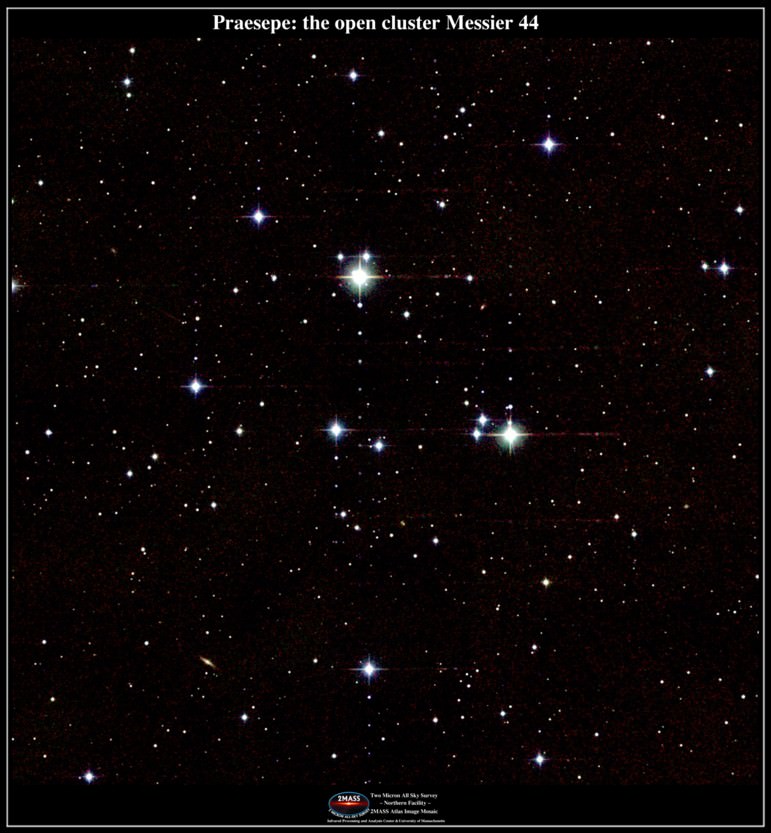Praesepe (aka. the Beehive Cluster)
As astronomers near the 800 mark for confirmed extra solar planets, it seems that notable milestones are becoming fewer and further between. Multi-planet systems aren’t even worth mentioning. Planets less massive than Earth? Already heard about it. Detecting atmospheres? Old news.
But a recent paper manages to sneak in one new first: The first detection of hot Jupiters in an open cluster. This discovery is not simply notable due to the novelty, but clusters have special characteristics that can help astronomers determine more of the history of the system.
The discovery was made by astronomers at Georgia State University using the “wobble” method in which they looked for the spectroscopic wiggle of spectral lines as planets tugged their parent stars around in orbit. The Beehive Cluster was chosen because it is a nearby cluster with over 1,000 member stars, many of which are similar in mass to the Sun. Additionally, the cluster is known to have an above average metallicity which is known to be correlated with planetary systems.
Searches of other open clusters have largely come up empty. Only two stars in open clusters have so far been found to have planets and both of those are around giant stars and as such, the planets are in wide orbits. This paucity is odd since stars are expected to form in clusters, and as such, the frequency of planets in clusters should be nearly the same as isolated stars.
The team used the 1.5-m Tillinghast Reflector at the Fred L. Whipple Observatory on Mt. Hopkins, Arizona observing a total of 53 stars in the cluster. Their results uncovered two new hot Jupiter planets in tight orbits around the parent, main-sequence stars. The first has an estimated mass of 0.54 times that of Jupiter while the second weighs in at 1.8 Jupiter masses.
The discovery helps to place constraints on how planets form and migrate in fledgling systems. Since massive planets such as these would need to form further out in colder parts of the circumstellar cloud, such planets would have to move inwards. The time period in which this happens has been a difficult question for astronomers to pin down. But since the Beehive cluster is only 600 million years old and these new planets are already in tight orbits, this helps to demonstrate that such migration is possible on short timescales.
While these are the first of their kind discovered in open clusters, this discovery puts the number of hot Jupiters in open clusters in rough agreement with expectations based on the number of such systems of stars that are no longer bound in clusters. This finding bridges the gap between formation and isolated stars that previous searches of open clusters had left open.


Excellent. Every time we get data it either constrains theory or opens up new theoretical possibilities. Less than 20 years ago we had no extrasolar planet data excepting those weird pulsar planets.